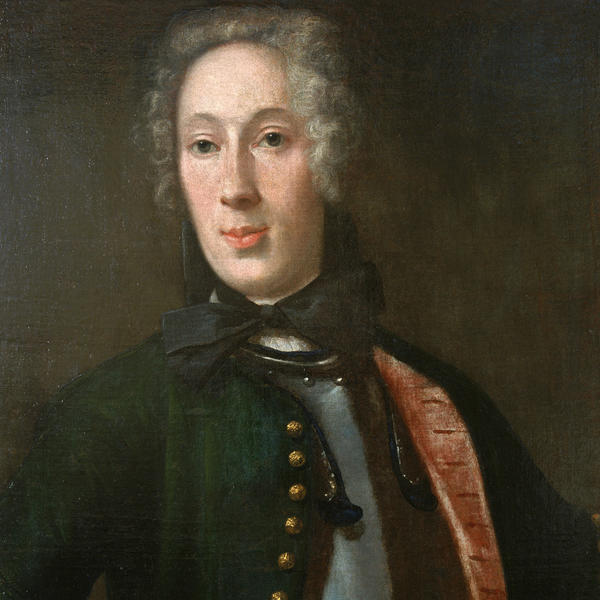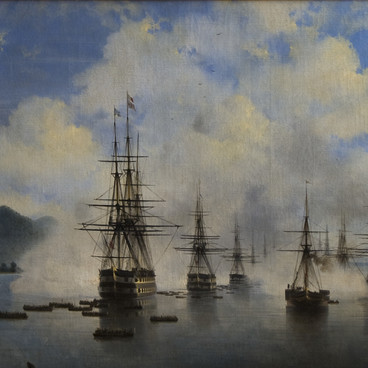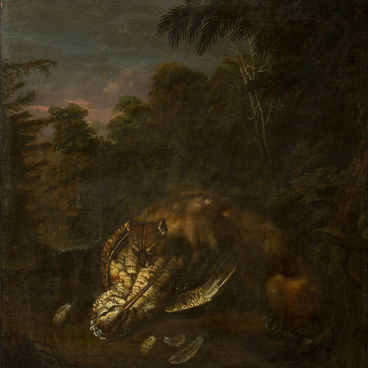Grand portrait of Adam Gustav von Ulrich was painted by Johann Wedekind, a Baltic artist, in 1731. The young baron ordered the portrait of himself in the view of his upcoming wedding.
Portrait of Adam Gustav von Ulrich
Время создания
1731
Размер
72,5x55,7 cm
Техника
Canvas or fabric, oil
Выставка
6
Открыть в приложении#1
Johann Heinrich Wedekind
Portrait of Adam Gustav von Ulrich
#2
#3
In the painting, Adam von Ulrich is dressed in line with the fashion trends of the eighteenth century. A snow-white shirt is decorated with a modest lace frill, which is hidden under a dark tie. The baron is wearing a camisole of emerald colour — a justacorps with numerous gold-plated buttons and a cuirass, a metal torso-covering piece of armour.
On his head, Adam von Ulrich is also wearing a massive powdered wig which were worn by all noble and military men in Europe. Their form and size would depend on the social status and financial capacities of the owner.
#4
The portrait also witnesses that in line with the fashion of the eighteenth century, Adam von Ulrich used makeup: ceruse and powder blusher. This makes his face stand out even more against the dark neutral background.
#5
The history of the Russian art of the eighteenth century is closely related to artworks created by foreigners. The art history introduced a special term for the western-European artists who worked in the Russian Empire in those times - ‘Rossika’. The author of the painting was one of them.
#6
Johann Wedekind was a German by birth. He was born in 1674 in Reval (today’s Tallinn, Estonia) For a long time, he lived and worked in Sweden. The Baltic artist rose to prominence when he painted a portrait of Charles XII, the King of Sweden. Afterwards, Swedish dignitaries, generals, and military commanders willingly posed for the acclaimed artist. In 1725, at the invitation of Peter I the Emperor, Johann Wedekind came to Saint Petersburg to become a court painter.
#7
Johann Wedekind is considered to be the founding father of secular portrait painting in Russian art. He painted portraits of Peter the Great, Anna of Russia, then-Emperor-to-be Peter II. In 1732, the first Russian Cadet Corps School was established where Johann Wedekind worked as an art teacher. Johann Wedekind was renowned not only for elegant portraits. He was also the author of numerous replicas of the famous artists' paintings. Noblemen ordered them for their parlours and studies.
#8
After the Revolution of 1917, the Petrograd branch of the State Museum Fund sent Johann’s paintings to county museums. This is how this portrait found its way to the collection of the Samara Art Museum. Now Russian museum collection boasts fifteen works by the Baltic artist.
читать дальшескрыть
00:00
00:00
1x
Portrait of Adam Gustav von Ulrich
Время создания
1731
Размер
72,5x55,7 cm
Техника
Canvas or fabric, oil
Выставка
6
Открыть в приложении
Поделиться





